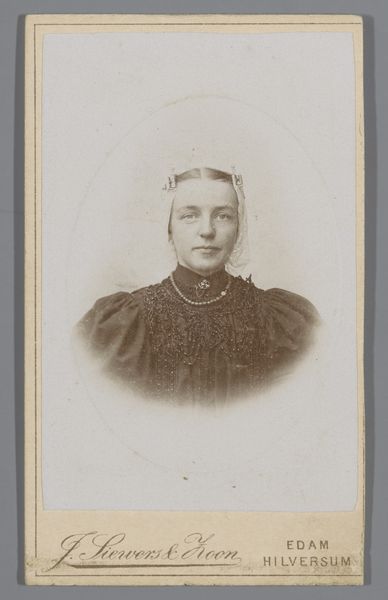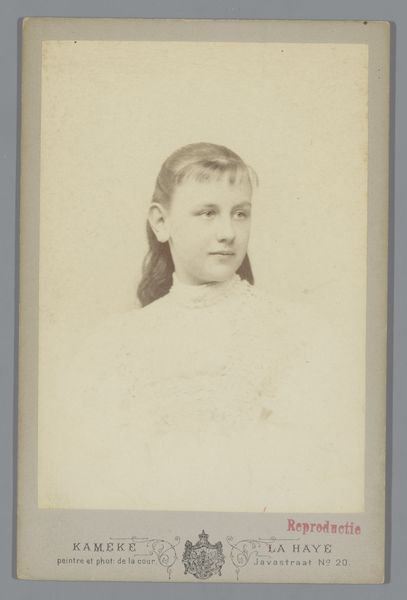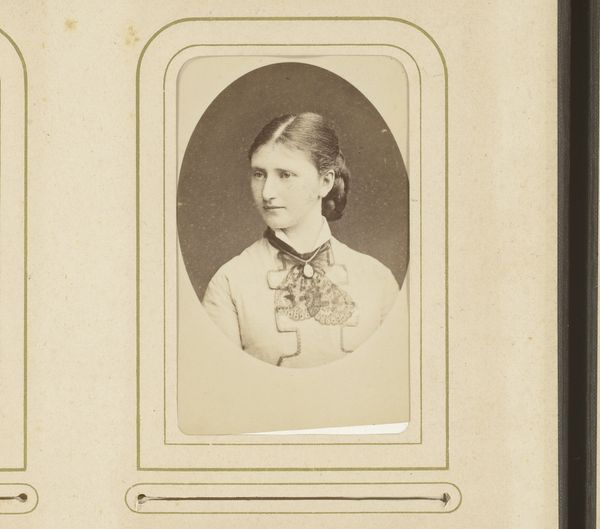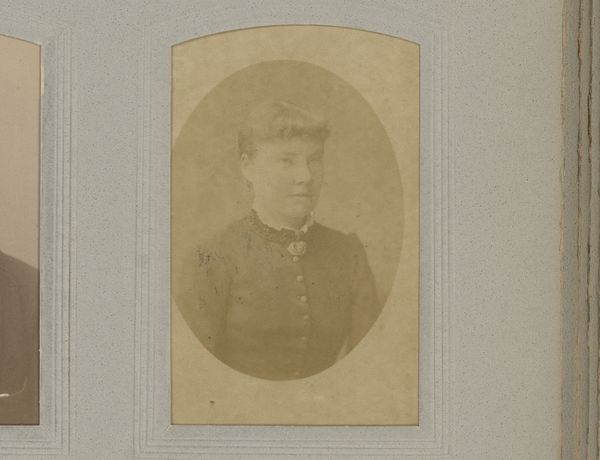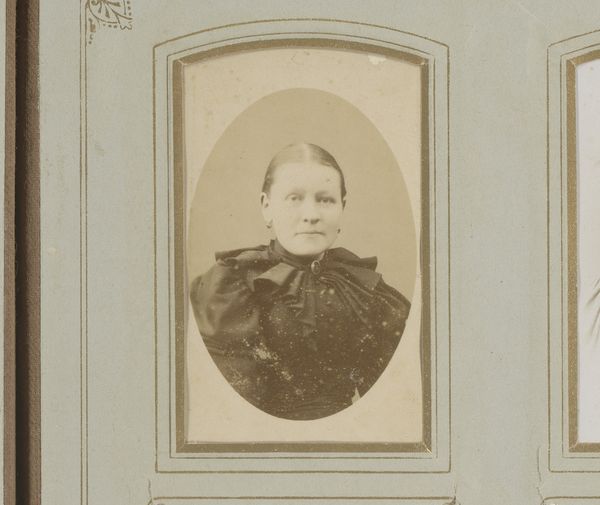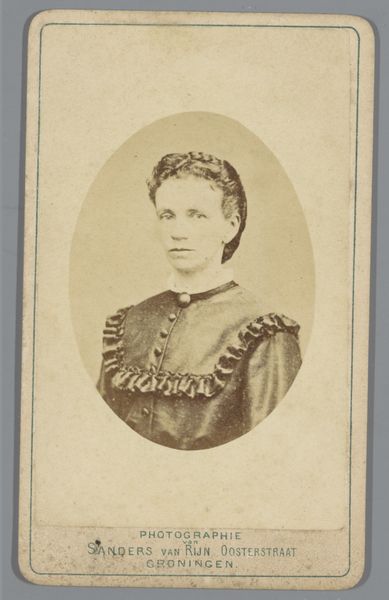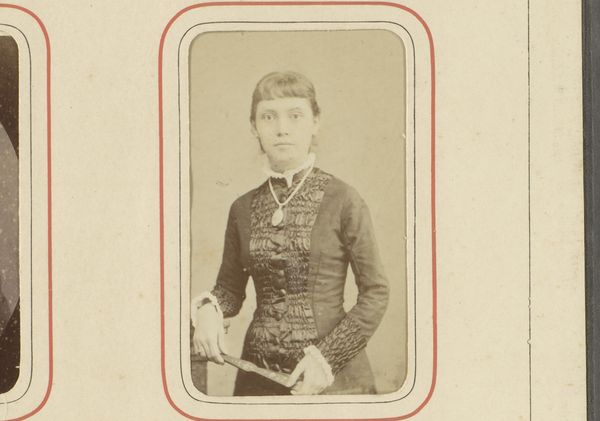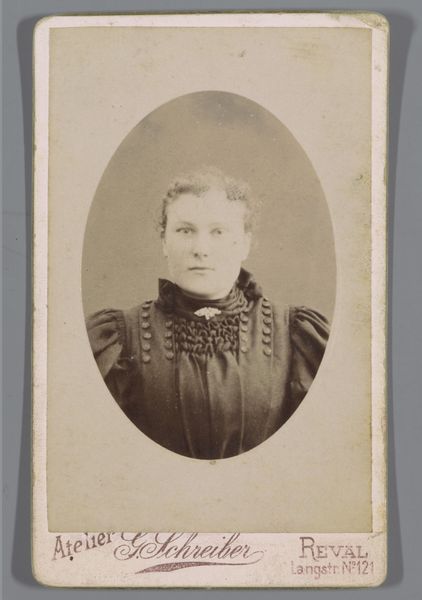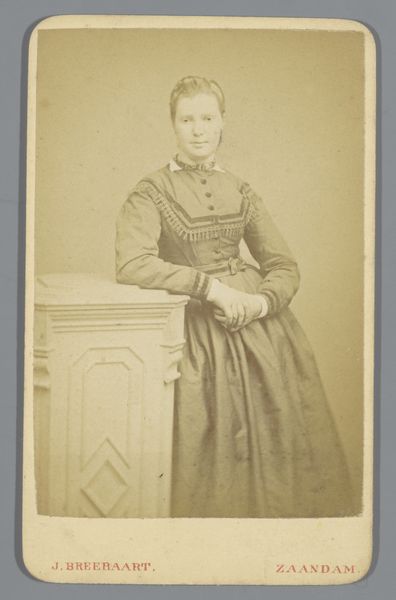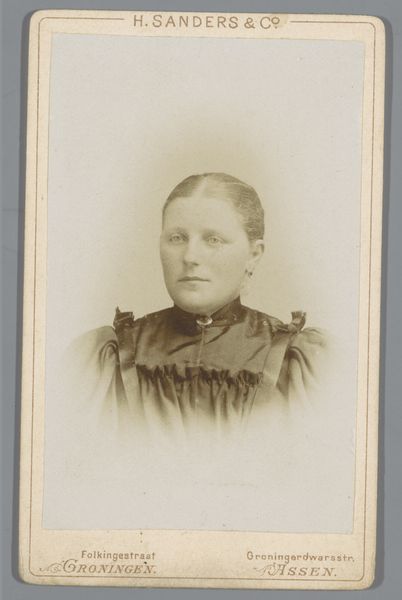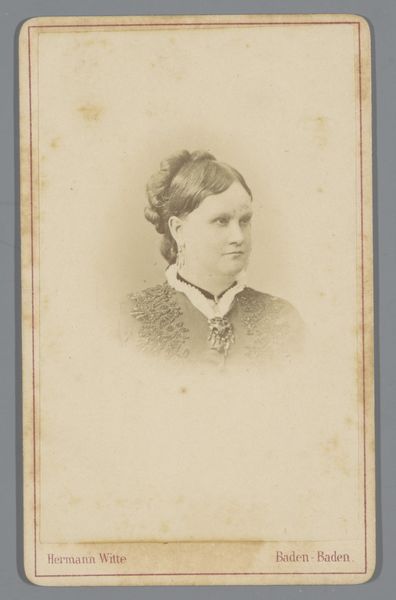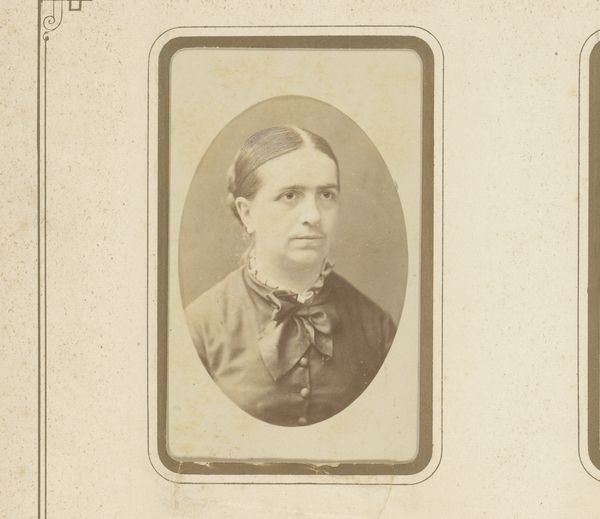
paper, photography, decalcomania, albumen-print
#
portrait
#
paper
#
photography
#
decalcomania
#
paper medium
#
albumen-print
Dimensions: height 135 mm, width 101 mm, height 185 mm, width 148 mm
Copyright: Rijks Museum: Open Domain
Curator: Here we have “Portret van jeugdige koningin Wilhelmina,” or "Portrait of youthful Queen Wilhelmina," dating from 1890 to 1896. It’s an albumen print, a photographic process popular at the time. The photographer, listed as Kameke, captured a very young queen. Art Historian: She looks almost ethereal, doesn't she? The soft focus and delicate lace give her a sort of dreamlike quality. I'm struck by how carefully constructed this image must have been to convey power even through a medium like photography, which was then relatively new. Curator: Indeed. Notice the subtle tonal range, a characteristic of the albumen process. The artist – or, I suppose, the photographer in this case – plays with light and shadow to sculpt her features, drawing attention to her gaze. Her gaze meets the viewer, by the way, with an intent and steadiness that speaks volumes. Art Historian: Right. The portrait isn't just about Wilhelmina’s features but also about presenting the monarchy in a modern age. Photography democratized portraiture, making it more accessible. This image helped cement the idea of Wilhelmina as a modern yet still regal leader in the public's imagination. She was just a child, but this image would have helped shape perceptions of her. Curator: It is interesting to observe the texture interplay between the smooth photographic paper, which gives a luminous backdrop, and the detail afforded to Wilhelmina's garments. Lace seems to have been perfectly captured. There are strong horizontals in the composition to stabilize the figure. It’s also contained. We don't see beyond a torso. This emphasizes a close connection between the sitter and viewer. Art Historian: Precisely, these portraits of the Dutch monarchy were frequently reproduced, finding their way into homes and businesses. It gave common citizens a sense of connection with their leaders, cultivating a feeling of national pride and stability through a visual presence, quite separate from painting traditions, where portraiture served the elite classes only. Curator: Looking at the subtle imperfections on the print itself—the discoloration and minor blemishes—gives an added layer of richness, though I know that historians find it an exciting element to track as well. I will note how nicely the passage of time adds its character to the piece. Art Historian: Yes. These small details speak volumes about the journey of the photograph, reminding us that art exists in dialogue with both its time of creation and its time of viewing. Thank you for the formal details! Curator: And thank you, as ever, for setting the image so thoughtfully within its era!
Comments
No comments
Be the first to comment and join the conversation on the ultimate creative platform.
